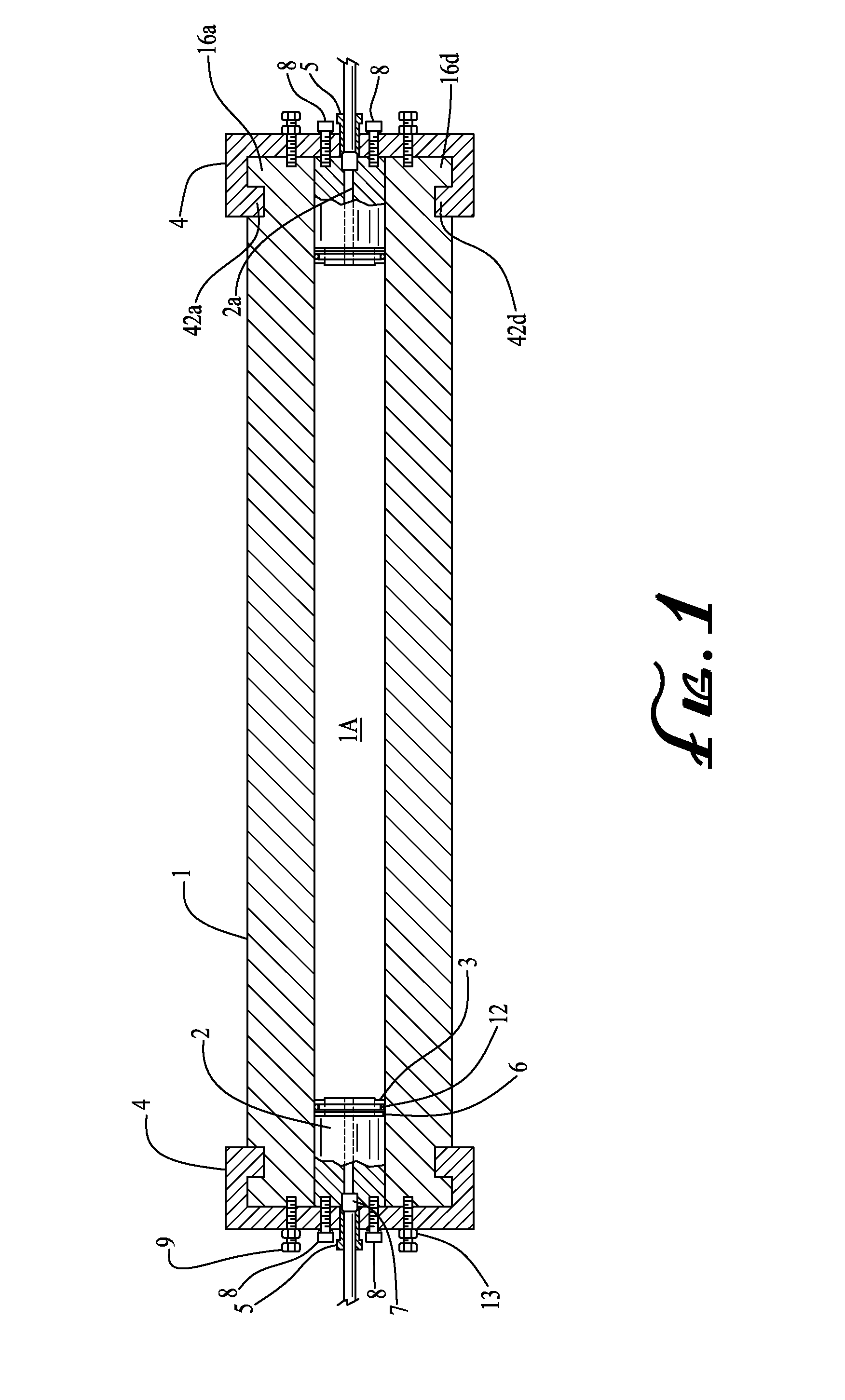Shock attenuator and closure for same
a technology of shock attenuator and closure, which is applied in the direction of mechanical equipment, metal working equipment, pipe elements, etc., can solve the problems of fatigue loading, failure of the closure, and force requirements, and achieve the effect of reducing the number of failures
- Summary
- Abstract
- Description
- Claims
- Application Information
AI Technical Summary
Benefits of technology
Problems solved by technology
Method used
Image
Examples
Embodiment Construction
[0023]As will be clear below, there are alternative configurations of a preferred attenuators constructed in accordance with the invention. One alternative will be referred to below as the externally locked” configuration, and the other will be referred to as the “internally locked” configuration.
Externally Locked Configuration
[0024]FIG. 1 shows a preferred attenuator body 1 having an internal bore 1A communicating between opposing ends. Male end plugs 2 are installed at those opposite ends of the body to close the bore.
[0025]The attenuator body is closed at each end by a respective end cap 4 having a through-hole 4A through which fluid communication with the bore is enabled via a fitting hereinafter described. The fitting at each end permits the ingress of fluid at one end of the attenuator body (the “inlet”) and the egress of fluid at the other end (the “outlet”). It may be noted, and it is known to those of ordinary skill in the art, that the fluid does not necessarily flow thro...
PUM
 Login to view more
Login to view more Abstract
Description
Claims
Application Information
 Login to view more
Login to view more - R&D Engineer
- R&D Manager
- IP Professional
- Industry Leading Data Capabilities
- Powerful AI technology
- Patent DNA Extraction
Browse by: Latest US Patents, China's latest patents, Technical Efficacy Thesaurus, Application Domain, Technology Topic.
© 2024 PatSnap. All rights reserved.Legal|Privacy policy|Modern Slavery Act Transparency Statement|Sitemap



